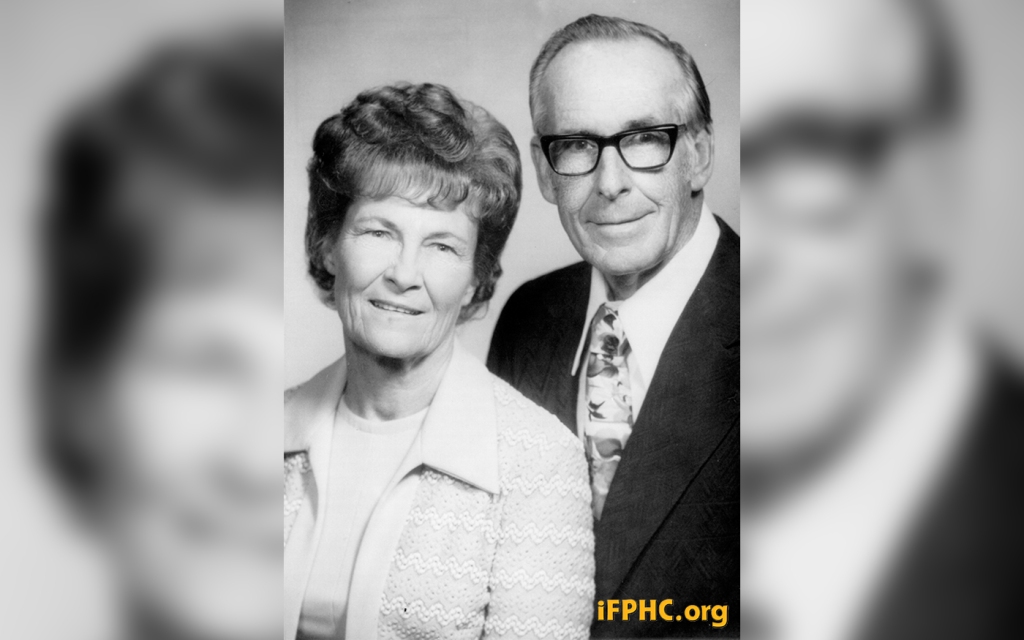
This Week in AG History — May 11, 1952
By Glenn W. Gohr
Originally published on AG News, 09 May 2024
Alice Reynolds Flower (1890-1991), the wife of AG pioneer J. Roswell Flower, is a shining example of motherhood. Affectionately known as “Mother Flower,” she preached, taught Sunday School, led prayer meetings, wrote articles, penned poetry, authored books, and lived a godly example in front of her six children and everyone she came in contact with.
As Mother’s Day approaches, it is good to consider an article that Mother Flower wrote for the Pentecostal Evangel in May 1952. It was also made available in tract form through the Gospel Publishing House and was widely distributed.
In “The Business of Coat-Making,” Mother Flower talked about Hannah, the mother of Samuel in the Old Testament. Samuel’s mother prayed diligently to have a son, and when her first-born son arrived, she dedicated him to God’s service. As a young boy, he went to live with Eli the high priest. The Bible record says, “Moreover his mother made him a little coat, and brought it to him from year to year, when she came up with her husband to offer the yearly sacrifice” (1 Samuel 2:19).
This verse held deep significance for Mother Flower. She liked to ponder how Samuel’s mother found a way to minister to her son, even though he was consecrated to service in the house of God. She imagined the joy Hannah had in every stitch of the garment she made each year. Mother Flower said, “To Hannah, making that coat was no ordinary bit of sewing; it was her one chance to express yearly in practical manner the love of her heart.” She continued, “And she did it faithfully, delivering each tiny garment personally to her Samuel there in the house of God.”
Mother Flower suggested that God never intended the business of coat-making to end with Hannah. She gave an example of her own mother, who provided spiritual “coats” for each of her daughters. First, she gave each of them a “coat of prayer.” Mother Flower shared her own testimony of her mother praying for her during her teen years, when she was struggling with a number of conflicts. Partly due to her mother’s prayers she surrendered her life to Christ and later was baptized in the Holy Spirit on Easter Sunday of 1907 at the age of 16.
Her mother also fashioned “coats of consistent living” for each of her children. She testified, “Her every walk before us stirred our hearts to follow God similarly.” Mother Flower said that fervor in the church is good, and laboring for others is commendable, but “making the coat of consistent living” is the most important task of a mother.
Another aspect of coat-making is the Word of God. Mother Flower gave a testimony that after her mother was miraculously raised from a deathbed experience and filled with the Holy Spirit, she started the family altar. Each morning the family gathered together to read God’s Word and pray, and her mother also helped the children to memorize Scripture. She compared her mother’s influence through the Word of God to Timothy in the New Testament whose faith was molded by his mother and grandmother.
The “coat of discipline” is also essential. She shared that, “No home is beautiful or happy without obedience, respect, honesty, and cooperation. The standard of righteous living as taught by the Word of God must be faithfully, constantly, consistently raised as a part of the family existence,” said Flower, “not a passing suggestion, but an essential detail of the family living, as is the eating, drinking, and sleeping.” Training up obedient, honest, respectful, and God-fearing children is vitally important.
One more coat that is essential is “Understanding Love.” She felt it imperative that a mother have occasional “heart-charts” and “seasons together before God” with each of her children. She said, a “mother must keep ever wisely stitching on this ‘coat of understanding’ if she would successfully fulfill her highest ministry in the home.”
Mother Flower’s admonition is for more mothers to pray diligently for their children on a daily basis, live a consistent Christian life, study the Word of God, offer guidance and training, and hem all of this in love and understanding.
Read more in “The Business of Coat-Making” on pages 3-4, 22 of the May 11, 1952, issue of the Pentecostal Evangel.
Also featured in this issue:
• “Visions in the Night,” by Frank M. Boyd
• “Healed Through Mother’s Prayers,” by Allen Bowman
And many more!
Click here to read this issue now.
Pentecostal Evangel archived editions courtesy of the Flower Pentecostal Heritage Center.
Do you have Pentecostal historical materials that should be preserved? Please consider depositing these materials at the Flower Pentecostal Heritage Center (FPHC). The FPHC, located in the Assemblies of God national offices, is the largest Pentecostal archive in the world. We would like to preserve and make your treasures accessible to those who write the history books.
Flower Pentecostal Heritage Center
1445 North Boonville Avenue
Springfield, Missouri 65802 USA
Phone: 417.862.1447 ext. 4400
Toll Free: 877.840.5200
Email: archives@ag.org
Website: https://ifphc.org/











